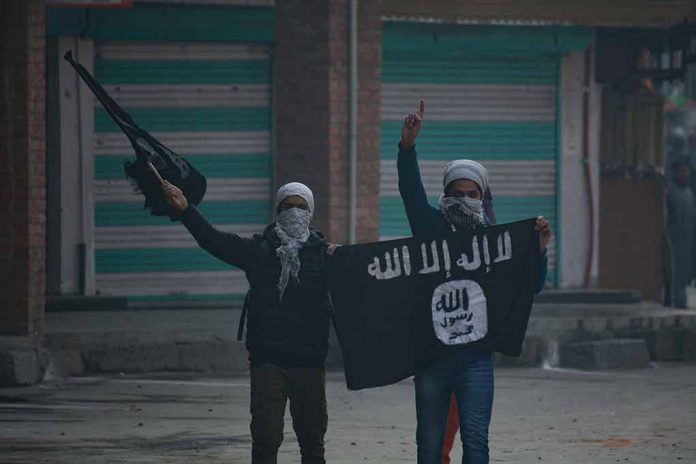
FBI Director Christopher Wray emphasizes the urgent threat of Islamic terrorism, warning of rapidly radicalizing individuals undetectable by authorities.
At a Glance
- The FBI is concerned about potential attacks on the U.S. by Islamic State (IS) supporters.
- Wray’s comments follow recent ISIS-influenced incidents in New Orleans and Brooklyn.
- Authorities face challenges in predicting lone attacks due to rapid radicalization.
- Despite the concerns, there is no specific, credible threat to the U.S. homeland currently.
FBI’s Warning of an Immediate Threat
The FBI, under Director Christopher Wray, is signaling heightened concerns over possible coordinated Islamic State (IS) attacks on the U.S. homeland. These concerns follow a series of threats and recent incidents that spotlight the potential for lone-wolf attacks by rapidly radicalizing individuals. Wray underscores that these threats, though perceived as distant, may be closer to home than anticipated, pointing to a metaphor that aligns their immediacy to objects ‘closer than they appear.’
This newfound urgency finds its roots in recent incidents like the ISIS-influenced attack in New Orleans’ French Quarter, where a U.S. citizen, radicalized online, instigated violence in tribute to ISIS. In Brooklyn, authorities thwarted a mass shooting scheme that would have echoed the September 11 attacks in scale. This collaboration with Canadian partners to arrest a Pakistani national, who had planned the attack on New York City’s Jewish center, highlights the covert and rapid nature of such threat evolutions.
Challenges in Preventing Lone-Wolf Attacks
Challenges persist in mitigating these threats, with limited time and information complicating efforts to connect intelligence dots. FBI Director Wray noted that the time to thwart such schemes is scant. The rapid radicalization and crude attack styles render detection arduous.
In Wray’s words, “And if you think about that old saying about connecting the dots, there are not a lot of dots out there to connect. And there’s very little time in which to connect them.”
European agencies have also heightened alerts, responding to IS-linked calls for attacks in stadiums hosting Champions League matches in Madrid, London, and Paris. These movements underscore the critical nature of the threat abroad, but U.S. intelligence believes the immediate threat remains limited despite these warnings.
U.S. Homeland Security and Intelligence Stand
The U.S. Department of Homeland Security (DHS) advises vigilance among Americans, yet reassures the public with no specific or credible intelligence pointing to an imminent IS threat inside the U.S. However, given the global reach of IS, the possibilities of strikes against U.S. and Western interests elsewhere are not discounted, urging continued awareness and caution.
The narrative shared by U.S. military and intelligence suggests IS struggles with mounting a viable threat on American soil. Christine Abizaid, National Counterterrorism Center Director, acknowledges these challenges, stating, “The terror group is ‘struggling in many ways to mount a major capability that is relevant to the United States.'” This further emphasizes the gap between perception and tangible threat, a gap that may close swiftly without due vigilance.





